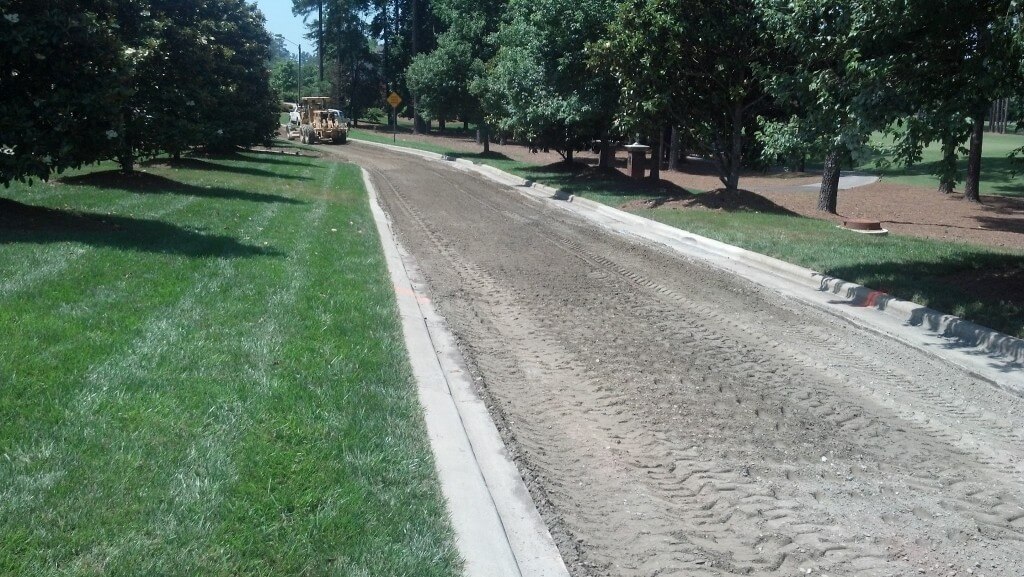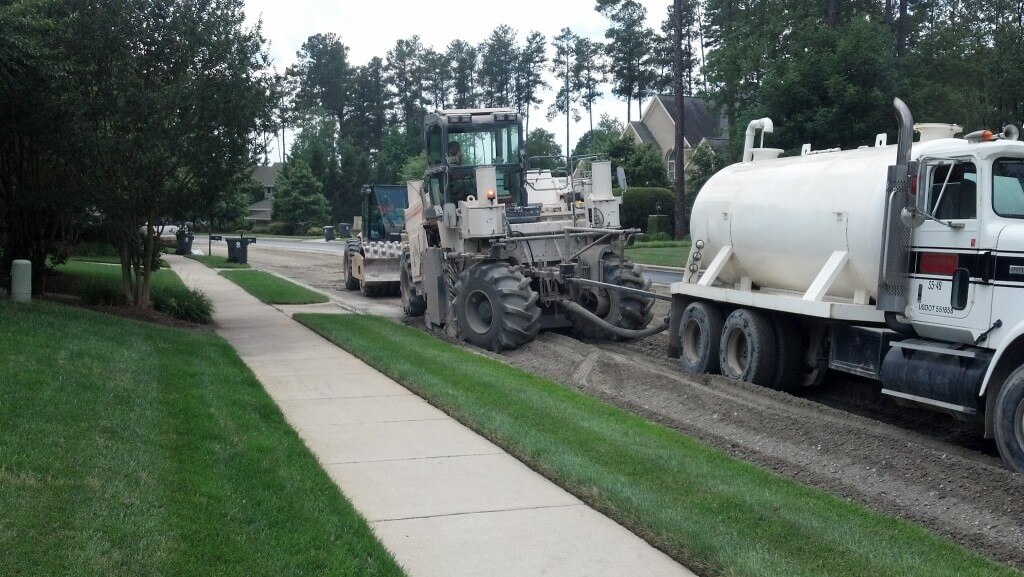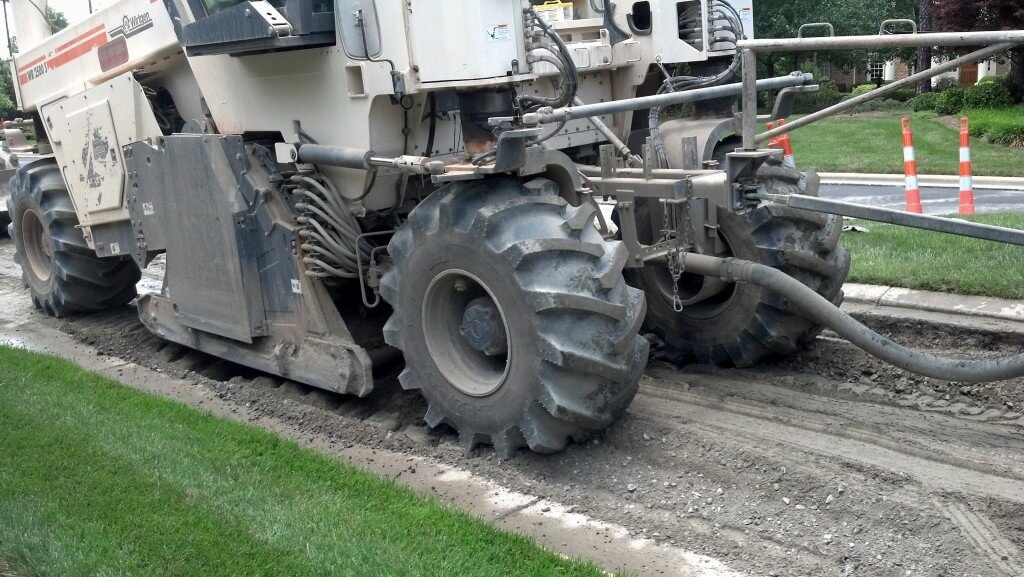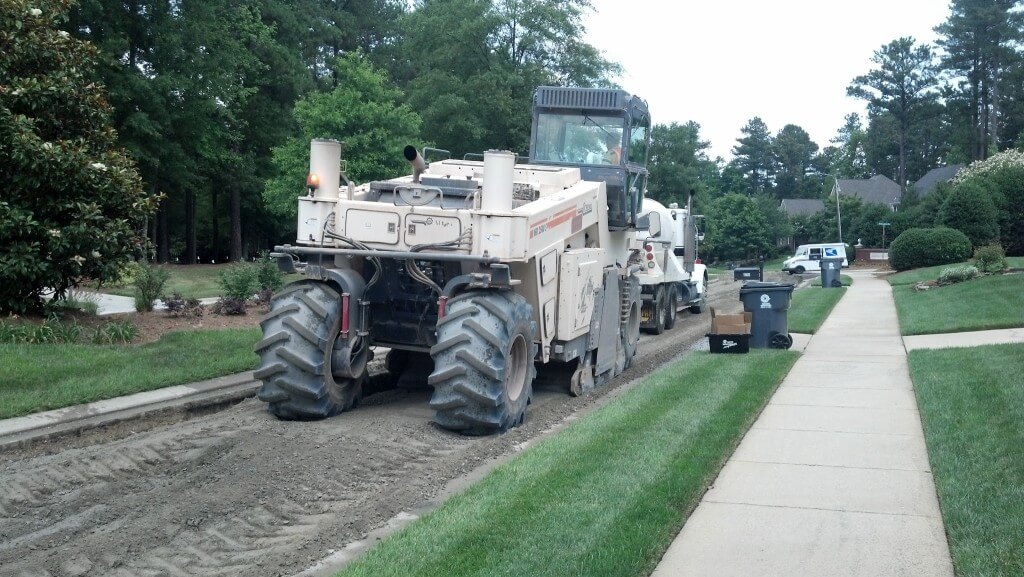Cement Stabilization
What Is Cement Stabilization?
Cement stabilization involves injecting or mixing dry portland cement into a subsurface by various means, either mechanically with a large grinder, stabilizer or milling machine, or with another device that will mix the material. Water is added to initiate the chemical process, and, over a few hours, a less than par subgrade will begin to harden. Cement Stabilization will increase the weight capacity of a structural system or subgrade by adding the properties of cement while at the same time avoiding over rigidification that can lead to cracking in the new surface.
Success Where Other Methods Fail
Cement stabilization has gained in popularity over the last few years. The rapid pace of development and the need to deliver infrastructure improvements in a timely manner has led to the wide scale application of the cement stabilization process. In the past, geotechnical companies have had few weapons in their arsenal to deal with soft subgrades. Generally, the only two solutions were to aerate the subgrade and let the sun help to lower moisture content to an acceptable level or to remove the soft soils and replace with acceptable soil or stone subbase. Aeration is slow and isn’t guaranteed to be effective. Removal and replacement is effective as long as you can get down something firm to build on or put enough material over the soft layer to effectively bridge the condition. The addition of fabric or geogrid, depending on the situation may help to create this bridge but the cost of all this starts to add up. The cost of removal of the old base. The cost to bring in the new base. The cost of the fabric and the problem and unknown of how deep you need to go based on the condition all contribute to a very expensive somewhat moving target. With cement stabilization, the number of moving parts are reduced and the problem condition can be treated more comprehensively. Three variable become determinants based on the conditions. Depth of stabilization, amount of concrete and water to create optimal results.
The Raleigh Paving Difference
Cement stabilization is not cheap but often it is the best, most cost effective solution. In general, a major cost consideration in the stabilization process is the mobilization of an enormous amount of high dollar construction equipment. Special grinders, dry cement transfer trucks, water trucks, lowboy, motor graders etc… make up a typical cement stabilization crew. This makes stabilization out of reach for many small to midsize jobs. While these tools are indeed effective, they are overkill when the goal of job is to mix the subsoils with cement and add water in a consistent manner. Effective results can be achieved with far less equipment when experienced people are utilized. The end result is that the cement stabilization process starts to make sense on a smaller scale. This is the market we focus on. At Raleigh Paving, we can help you to determine the best solution for your needs since we don’t confine ourselves to any one remedy. We’ll work with you to help determine the needs of your lot or other surface, and will customize a solution that’s quick, convenient and cost-effective. We work hard to offer each customer the best service in the industry, and manage your paving project from start to finish, saving you headache and hassle.Choose Your Service Area Below:
Interested in cement stabilization services?
The experts at Raleigh Paving can help!
Raleigh Paving provides cement stabilization services throughout North Carolina. We serve the Triangle, Triad and Charlotte metro areas of North Carolina including Raleigh, Greensboro and Winston-Salem.
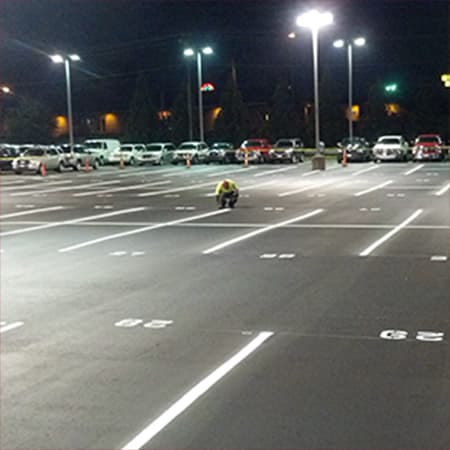
For Your Lot
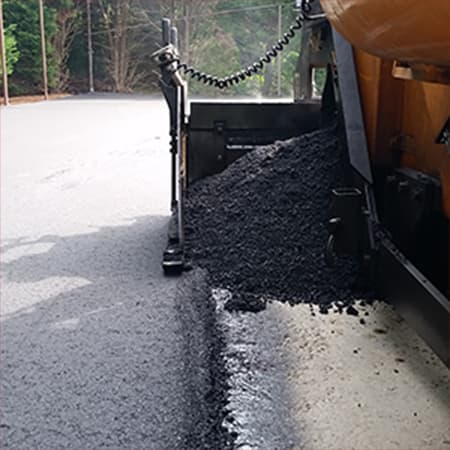

a child's wish!
